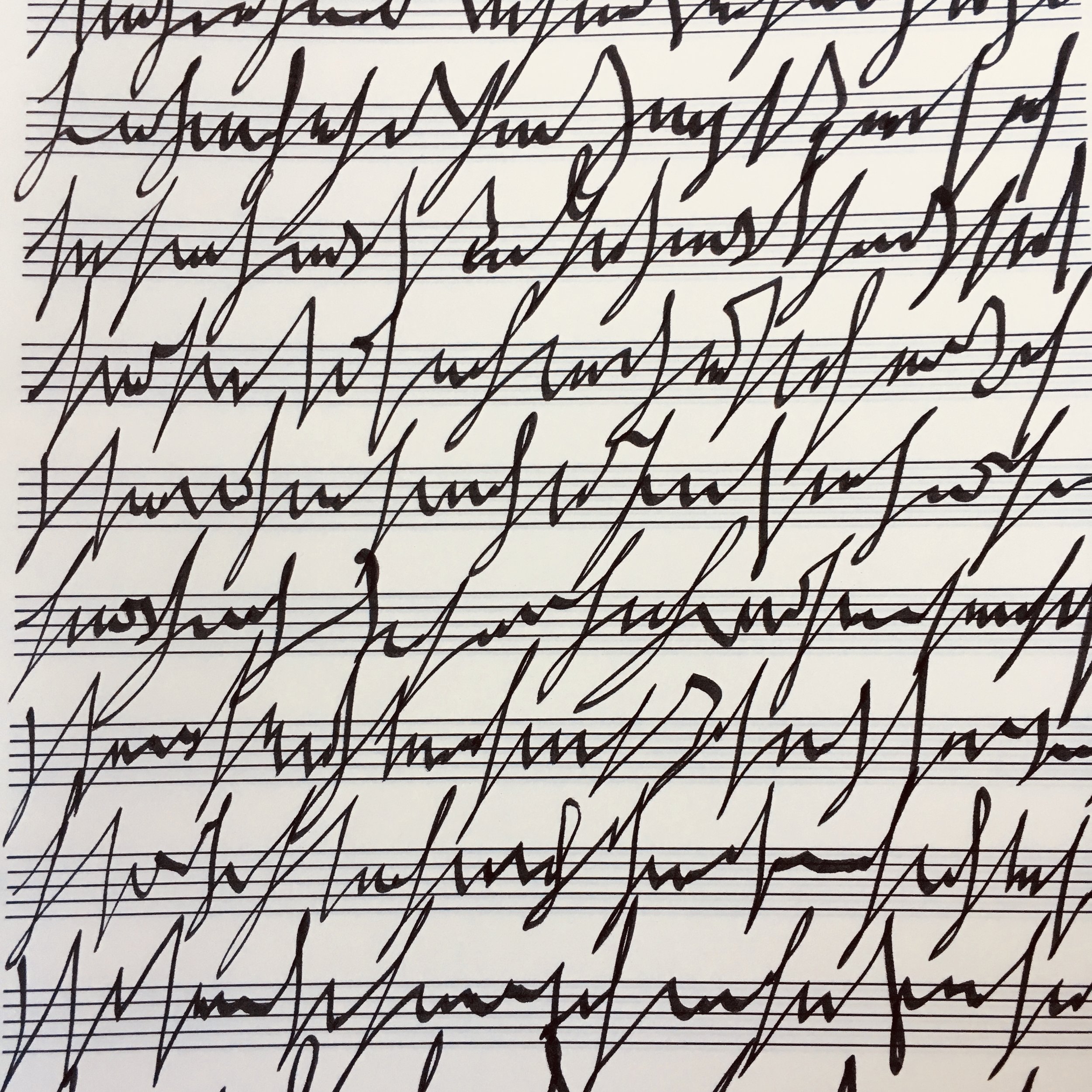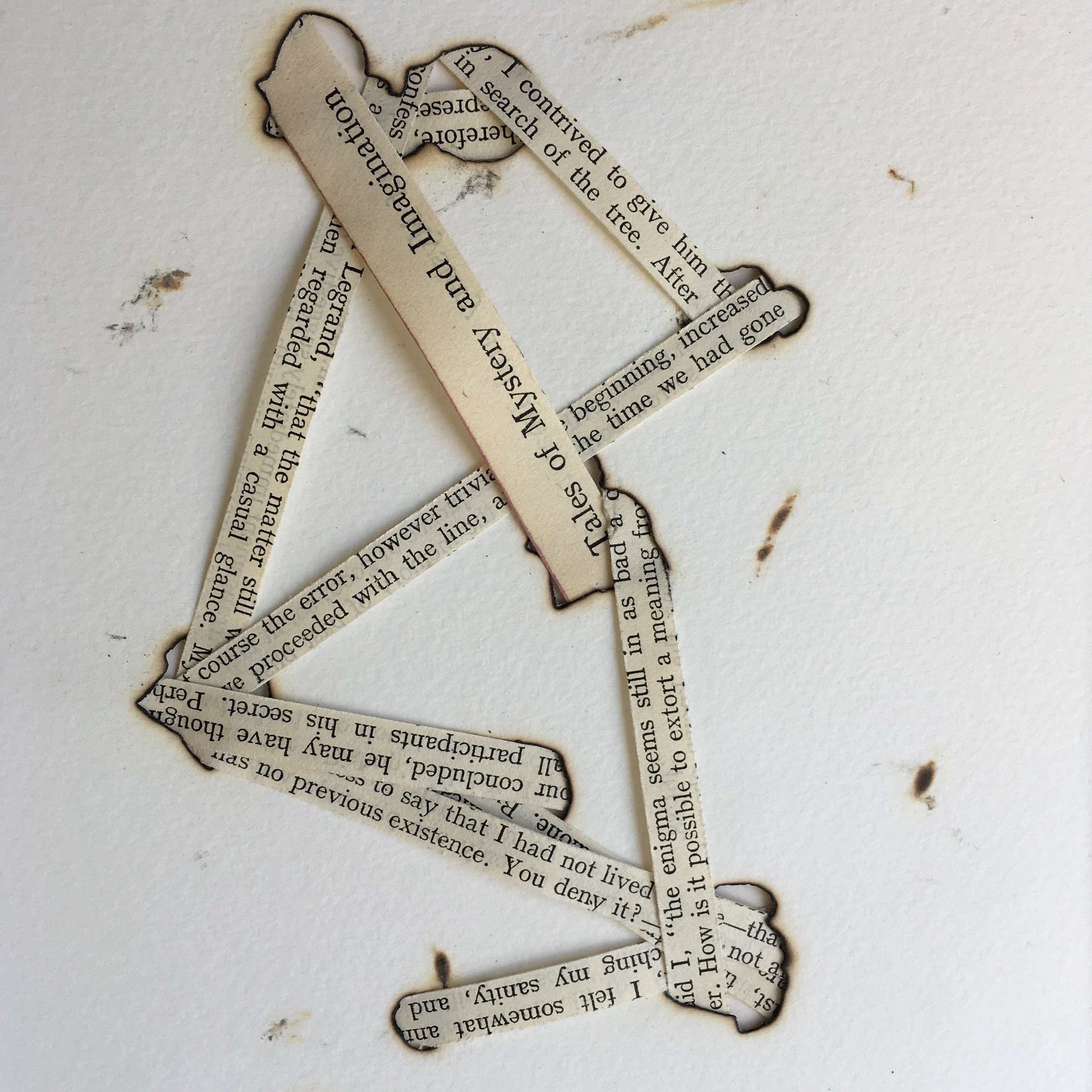Sequestration:
Can book and chapter titles be read in isolation absent from the text that they were intended to bind? If so, how does their meaning change and do they just become individual words or phrases identified by their etymological terms? This project produced a series of 8 text artworks which invites the reader to explore ‘titles’ in sequestration and consider the intention of their words: do they always foreshadow what is to follow, what may their redacted texts have held and what, if anything, do they become in separation? In this, the project becomes an impetus to cultivate creative opportunities for new, standalone flash/micro fiction, poetry, art or other interdisciplinary artistic endeavours to emerge and lead into interesting, echoic places.
War Score:
Adopting asemic techniques, War Score is a series of 10 pieces of experimental and artistic poetry that sits upon a creative seam and blurs the boundaries of language, notation and linguistics. This interdisciplinary project depicts elements of the First World War’s Western Front, and the indeterminacy of its composition is left open for interpretation by the reader. Outside the realm of traditional linguistic understanding and/or musical notation the use of gestural constraint fuses text and image into hybridised agreement and its asemic nature liberates the reader to decide how to explore and translate meaning; in this the reader becomes co-creator of the work ensuring that it can be performed in a myriad of ways.
Nise exhibited this work at Parallax Art Fair, London and received many subjective poetical interpretations and meanings from visiting participants. She is working these responses into a wider project.
EPILOGUE:
Historically, libricide has been associated with complex motivations towards political connotations but in understanding that destruction and creation are interrelated, Nise creates fragmented counter-narratives, poetry and visual art pieces without losing the presiding consciousness of the original content. Her recent projects have produced a body of work in response to an enquiry of narrative erasure using Ray Bradbury’s Fahrenheit 451, Edgar Allen Poe’s Tales of Mystery and Imagination and John Hunt’s The Ascent of Everest as impetus. Each project simultaneously engages with the thematic ideas within the book’s narrative, whilst exploring the destruction of the book as a material object. The aims of which were: to question whether creation is heightened through destruction, to examine the absent space left by the ruin, and to identify how that space may be negotiated by a reader. Is the semantic content still able to be translated in the space left behind? And, if so how might this be read? In this, the projects neither censored nor destroyed the books through their destruction but, in portraying each narrative’s metaphorical and cyclical understanding, their rebirth has provided a space for new beginnings - reinforcing that destruction and creation are not weapons in themselves, nor stand alone in isolation; rather their power lay in the relation between each other.
NB: only broken books are harmed in the process!









